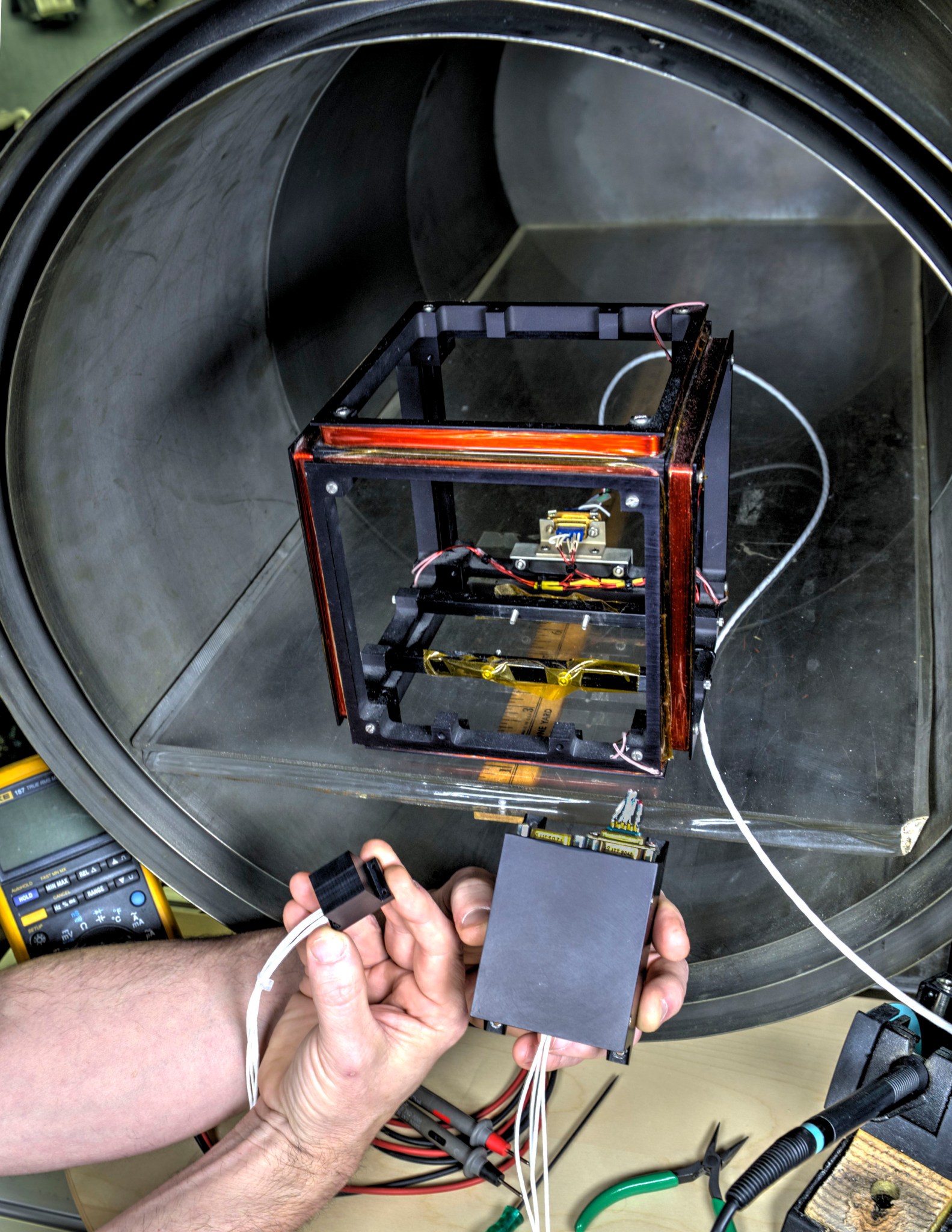They’ve flown on high-profile interplanetary and more modest low-Earth-orbiting missions, but in all cases the ubiquitous fluxgate magnetometers that scientists use to measure the intensity of a magnetic field will degrade over time.
A technologist at NASA’s Goddard Space Flight Center in Greenbelt, Maryland, now is developing a self-calibrating magnetometer that would be ideal for measuring the intensity and orientation of magnetic lines from both CubeSat and more traditional spacecraft.
With Goddard research-and-development funding, Todd Bonalsky is developing a functioning prototype, which he plans to fly on a sounding-rocket mission called Visualizing Ion Outflow via Neutral Atom Sensing-2, or VISIONS-2, in 2018. VISIONS-2 is designed to study the outflow of oxygen ions from Earth’s upper atmosphere and into the magnetosphere.
The prototype combines two types of magnetometers — the highly precise fluxgate and the optically pumped atomic magnetometer — into one relatively small package that could be used on constellation-type missions where multiple CubeSats are deployed to gather simultaneous, multi-point observations. This technique particularly is effective for studying Earth’s ever-changing, enveloping magnetic fields.
“We’ve already shown we can take relatively large, power-hungry fluxgate magnetometers and shrink them down to fly on CubeSats,” said Bonalsky, who successfully miniaturized a fluxgate magnetometer for the Dellingr CubeSat mission, which NASA recently launched. A Goddard team purposely developed Dellingr to improve the reliability of these small platforms.
“Now, I want to incorporate our miniaturized fluxgate with an absolute atomic magnetometer to create a fully self-calibrating, miniaturized vector magnetometer for CubeSats and small satellites, alike. This never hasn’t been done before,” he said.
Need for a Hybrid System
The need for an all-in-one instrument lies in the inherent advantages and disadvantages of both magnetometers, made more challenging as technologists attempt to further shrink the size of these instruments to fit inside CubeSats, whose units measure only four inches on a side.
Made of a core, which is highly susceptible to magnetization, and two coils of wire to resemble a transformer, fluxgate magnetometers have long been scientific workhorses due to their overall rugged construction and accuracy. They work when an alternating current, or AC, is passed through one coil, called the primary, to produce an alternating magnetic field that induces AC in the other coil, called the secondary.
The intensity and phase of the AC in the secondary are constantly measured. When a change occurs in the external magnetic field, the output of the secondary coil changes. The extent and phase of this change can be analyzed to determine the intensity and orientation of the magnetic fields in question. Consequently, the device measures not only the magnetic field of an object, but also its direction, whether it’s north, south, east, or west.
However, ever-changing temperatures such as those encountered in space will reduce its performance over time. Consequently, mission planners occasionally fly an atomic magnetometer, which operates under a different set of principles, to maintain the fluxgate’s calibration.
First developed more than 50 years ago, atomic magnetometers are made of alkali gases, such as rubidium or cesium, which send out a frequency proportional to the magnetic field. In other words, they literally resonate — like a crystal wineglass when its rim is rubbed — indicating the extent of a magnetic field.
Atomic magnetometers, unfortunately, aren’t a panacea, either. While not prone to drifting or degradation, they only can measure the field’s magnitude, not its direction.
Under his R&D funding, Bonalsky is developing a self-calibrating hybrid system combining both measurement techniques.
To achieve this, he has built an ultra-small, “chip-scale” atomic magnetometer filament, which he plans to install within the sensor coils of the fluxgate magnetometer he developed for the Dellingr mission. He then plans to test the device at Goddard’s upgraded Magnetic Test Facility in preparation for its possible inclusion on the VISIONS-2 sounding rocket mission.
“If we succeed, Goddard will be at the forefront of science-grade CubeSat magnetometry,” he said.
Small satellites, including CubeSats, are playing an increasingly larger role in exploration, technology demonstration, scientific research and educational investigations at NASA, including: planetary space exploration; Earth observations; fundamental Earth and space science; and developing precursor science instruments like cutting-edge laser communications, satellite-to-satellite communications and autonomous movement capabilities.
For more technology news, go to https://gsfctechnology.gsfc.nasa.gov/newsletter/Current.pdf
By Lori Keesey
NASA Goddard Space Flight Center






























